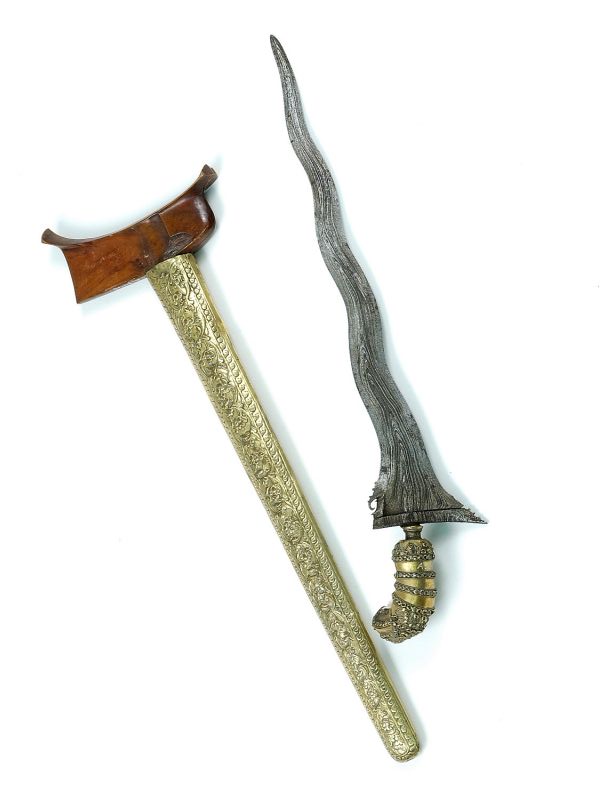Kris
 The kris or , , ); ; ; ; ; ; ; ; }} is a Javanese asymmetrical dagger with a distinctive blade-patterning achieved through alternating laminations of iron and nickelous iron (''pamor''). The kris is famous for its distinctive wavy blade, although many have straight blades as well, and is one of the weapons commonly used in the ''pencak silat'' martial art native to Indonesia. Kris have been produced in many regions of Indonesia for centuries, but nowhere—although the island of Bali comes close—is the kris so embedded in a mutually-connected whole of ritual prescriptions and acts, ceremonies, mythical backgrounds and epic poetry as in Central Java. Within Indonesia the kris is commonly associated with Javanese culture, although other ethnicities in it and surrounding regions are familiar with the weapon as part of their cultures, such as the Balinese, Sundanese, Malay, Madurese, Banjar, Buginese, and Makassar people. The kris itself is considered as a cultural symbol of Indonesia and also neighbouring countries like Brunei, Malaysia, Philippines, Singapore, and Thailand.
The kris or , , ); ; ; ; ; ; ; ; }} is a Javanese asymmetrical dagger with a distinctive blade-patterning achieved through alternating laminations of iron and nickelous iron (''pamor''). The kris is famous for its distinctive wavy blade, although many have straight blades as well, and is one of the weapons commonly used in the ''pencak silat'' martial art native to Indonesia. Kris have been produced in many regions of Indonesia for centuries, but nowhere—although the island of Bali comes close—is the kris so embedded in a mutually-connected whole of ritual prescriptions and acts, ceremonies, mythical backgrounds and epic poetry as in Central Java. Within Indonesia the kris is commonly associated with Javanese culture, although other ethnicities in it and surrounding regions are familiar with the weapon as part of their cultures, such as the Balinese, Sundanese, Malay, Madurese, Banjar, Buginese, and Makassar people. The kris itself is considered as a cultural symbol of Indonesia and also neighbouring countries like Brunei, Malaysia, Philippines, Singapore, and Thailand.A kris can be divided into three parts: blade ( or ), hilt (), and sheath (). Each part of the kris is considered a piece of art, often carved in meticulous detail and made from various materials: metal, precious or rare types of wood, or gold or ivory. A kris's aesthetic value covers the (the form and design of the blade, with around 60 variants), the (the pattern of metal alloy decoration on the blade, with around 250 variants), and referring to the age and origin of a kris. Depending on the quality and historical value of the kris, it can fetch thousands of dollars or more.
Both a weapon and spiritual object, kris are often considered to have an essence or presence, considered to possess magical powers, with some blades possessing good luck and others possessing bad. Kris are used for display, as talismans with magical powers, weapons, a sanctified heirloom (''pusaka''), auxiliary equipment for court soldiers, an accessory for ceremonial dress, an indicator of social status, a symbol of heroism, etc. Legendary kris that possess supernatural power and extraordinary ability were mentioned in traditional folktales, such as those of Empu Gandring, Taming Sari, and Setan Kober.
In 2005, UNESCO included the Indonesian kris in the Representative List of the Intangible Cultural Heritage of Humanity. Provided by Wikipedia
